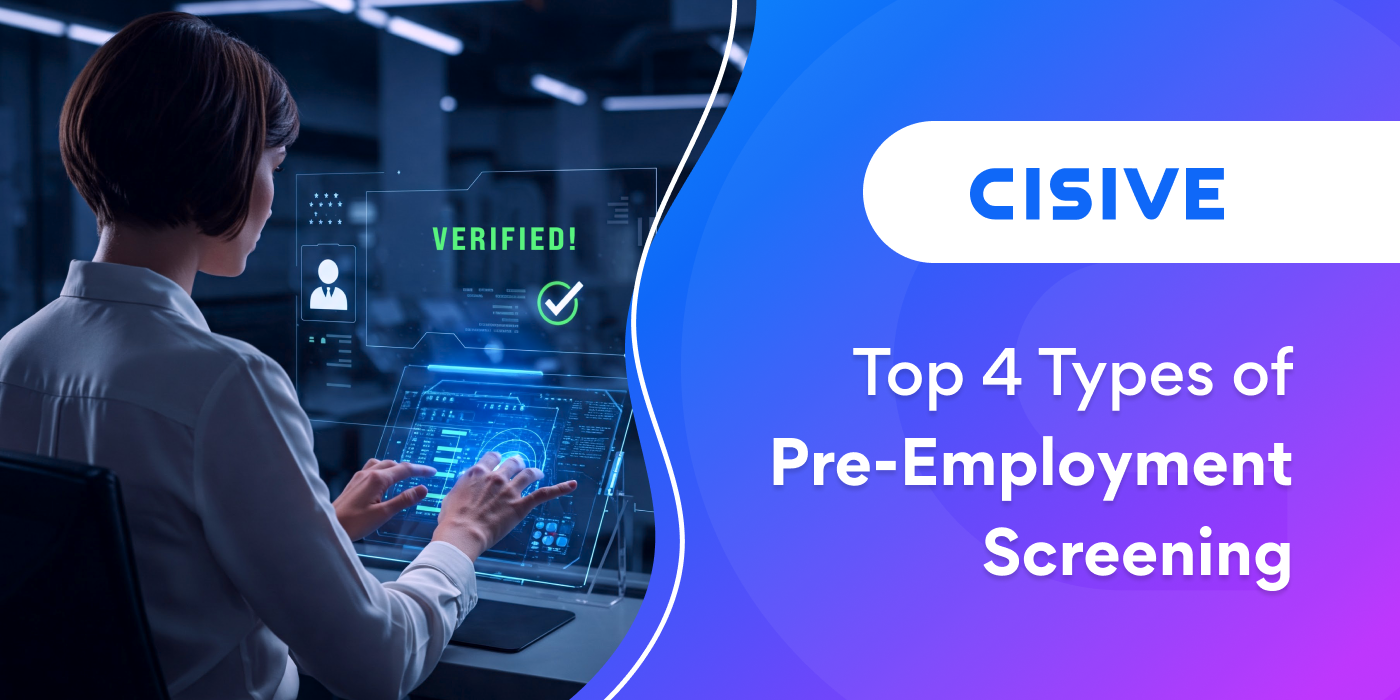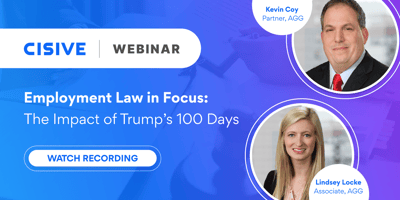

As U.S. immigration enforcement intensifies under new executive orders, I-9 compliance has taken...

Finding the right candidate for a new job opening is no easy feat. Between analyzing résumés and following legal requirements, companies and hiring managers have a lot on their plates.
A great way to streamline the hiring process is by implementing a strong pre-employment screening strategy. In this article, we'll break down the pre-employment screening process and demonstrate how to screen candidates effectively while staying compliant with legal regulations.
Key TakeawaysHere's what you need to know about the pre-employment screening process:
|
Pre-employment screening is a procedure employers follow to verify a candidate's qualifications and suitability for a job. It can include anything from drug tests to background checks.
Depending on the information being verified, pre-employment screening may take 2 to 5 days. Not only does this process help ensure companies are investing in good candidates, but it also helps maintain a safe workplace.
Pre-employment screenings use various checks and assessments to confirm information about a candidate. Common examples include criminal background checks, drug tests, and work eligibility verifications.
The exact screenings an employer conducts depend on the role and industry. For example, health care companies and schools may have stricter drug testing and criminal background checks because they deal with vulnerable populations.
In addition to promoting workplace safety, pre-employment screenings help save money by reducing turnover. They also protect employers from negligent hiring claims and potential lawsuits.
Pre-employment screenings are typically managed by human resources (HR) departments. HR professionals are familiar with the laws and regulations for their industry and can ensure that candidates meet any specific requirements.
In some cases, companies may outsource pre-employment screenings to third-party companies. For example, large organizations hiring multiple candidates may use background check firms to help guarantee accurate and efficient checks.
Information for pre-employment screenings is often sourced from the candidate directly. For example, an employer may ask a candidate to provide academic transcripts, references, or Social Security information.
Employers may also gather information from external sources, such as previous employers or educational institutions. They also consult public records to determine whether a candidate has a criminal history.
When sourcing information, companies are responsible for respecting a candidate's privacy. For example, when contacting a former employer, they should only ask questions relevant to the role.

Employers can run several types of pre-employment screening tests. Some types of screenings are common practice, while others are specific to certain industries.
When conducting a screening, it's important for companies to properly read and assess the information. Every type of screening has its own unique terminology that employers should be familiar with.
Criminal background checks examine a candidate's criminal history and check for any past or pending felonies, misdemeanors, and charges. This information is typically available via public records, such as federal databases or state and county court records.
Some roles require more extensive criminal background checks than others. For example, childcare companies need to verify that any candidate they hire is safe for children to be around.
Employment verification involves contacting former employers to confirm whether the information on a candidate's résumé is correct. Companies may also ask about job titles, work performance, and the duration of employment.
While most companies conduct employment verification, it's especially important for positions that require specialized skills. For example, if a company needs a candidate who is familiar with a certain computer program, they may ask former employers if the prospective employee has experience using that program.
Drug tests screen candidates for illegal substance use that could impede job performance or jeopardize workplace safety. These tests may use urine, saliva, or hair samples.
This type of testing is standard in industries where impaired performance can cause harm, such as health care, transportation, and construction. Typically, candidates need to engage in drug tests before and during employment.
License verification ensures candidates have any required certifications or professional licenses for the role. For example, a hospital planning to hire a registered nurse must verify the candidate's nursing license.
In many industries, license verification is a legal requirement designed to protect the workplace and anyone who utilizes its services, such as patients or clients. It also helps companies establish credibility.

When conducting pre-employment screenings, legal compliance is essential. Many screenings come with laws and regulations to ensure candidates are treated fairly.
In addition to protecting candidates, these regulations help protect employers from legal repercussions. By reviewing background check best practices, employers can ensure a fair and transparent hiring process.
Industry norms shape the pre-employment screening process by helping guide the types of checks employers conduct. Different industries have their own unique requirements and legal regulations.
For example, transportation jobs often require regular drug tests. Meanwhile, financial institutions routinely conduct credit checks to determine a candidate's financial responsibility.
Adhering to industry norms for pre-employment screening helps employers find the best candidates for their specific roles. It also helps guarantee that candidates undergo a fair hiring process.
The Equal Employment Opportunity Commission (EEOC) enforces federal laws that protect candidates from discrimination during the hiring process. These laws usually require that pre-employment screenings don't unfairly exclude individuals based on factors such as race, gender, age, or disability status.
In addition to preventing identity-based discrimination, the EEOC sets guidelines on how to properly conduct background checks and screenings. For example, it may offer guidance on when to conduct criminal checks or which types of questions to avoid.
Employment law is rapidly changing. Consult with your legal counsel regarding the most up-to-date information on EEOC policies.
Companies should follow any regulations relevant to their industry. For example, financial institutions should adhere to the Fair Credit Reporting Act (FCRA) when assessing a candidate's credit history.
Many regulations, including the FCRA, mandate transparency, which means employers need to inform candidates that they're conducting a certain screening. Employers must also give candidates an opportunity to dispute any inaccurate information found in reports.
Some states have legal requirements that dictate how employers should conduct certain pre-employment screenings. For example, 37 states have Ban the Box laws, which provide guidelines on how to conduct criminal checks.
These laws require employers to evaluate candidates' qualifications before examining their criminal history. This helps reduce bias against candidates with past convictions.
However, certain sectors, such as health care and education, don't need to follow Ban the Box laws due to the sensitive nature of their work. By following industry-specific regulations, employers can meet legal expectations and foster a more equitable hiring process.
Internal resources, such as HR teams or compliance officers, play a critical role in ensuring pre-employment screenings meet legal standards. These teams review policies, train hiring managers, and implement processes to ensure compliance.
One common practice is internal audits, which involve carefully reviewing a company's systems and processes to prevent any mistakes or legal issues. By investing in internal resources, employers can ensure their HR teams are as strong as possible.
Compliance issues arise when pre-employment screenings fail to follow legal and ethical guidelines. For example, immediately rejecting a candidate based on criminal record without considering their qualifications violates Ban the Box laws, which may lead to discrimination claims.
Employers can mitigate these risks by staying informed about laws and regulations, consulting legal experts, and regularly updating screening policies. Addressing compliance issues proactively protects the organization from fines and legal challenges and contributes to a fair hiring environment.
Considering the potential legal consequences of improper pre-employment screening, it's crucial that companies conduct proper checks. While some companies have large HR departments to manage these responsibilities, others may need to turn to external resources.
Common resources include pre-employment screening providers, such as Cisive. By providing legal expertise, industry knowledge, and background check tools, Cisive helps streamline the screening process and ensures the best possible outcome for employers and candidates.
From following industry norms to maintaining legal compliance, there are many complex rules when it comes to pre-employment screenings. At Cisive, we help companies conduct high-quality, lawful screenings, including background checks.
Whether you're a small business or a global enterprise, we have comprehensive screening solutions that meet the needs of your industry. Speak with an expert today to learn more.
Author: Jenni Gallaway
Bio: Content Marketing Manager at Cisive. 8 years of experience in the background screening industry.
Let's Connect on LinkedIn
As U.S. immigration enforcement intensifies under new executive orders, I-9 compliance has taken...

As the first 100 days of President Trump’s second term have come to a close, many employers are...

Healthcare organizations face a dual challenge: filling critical positions quickly while ensuring...